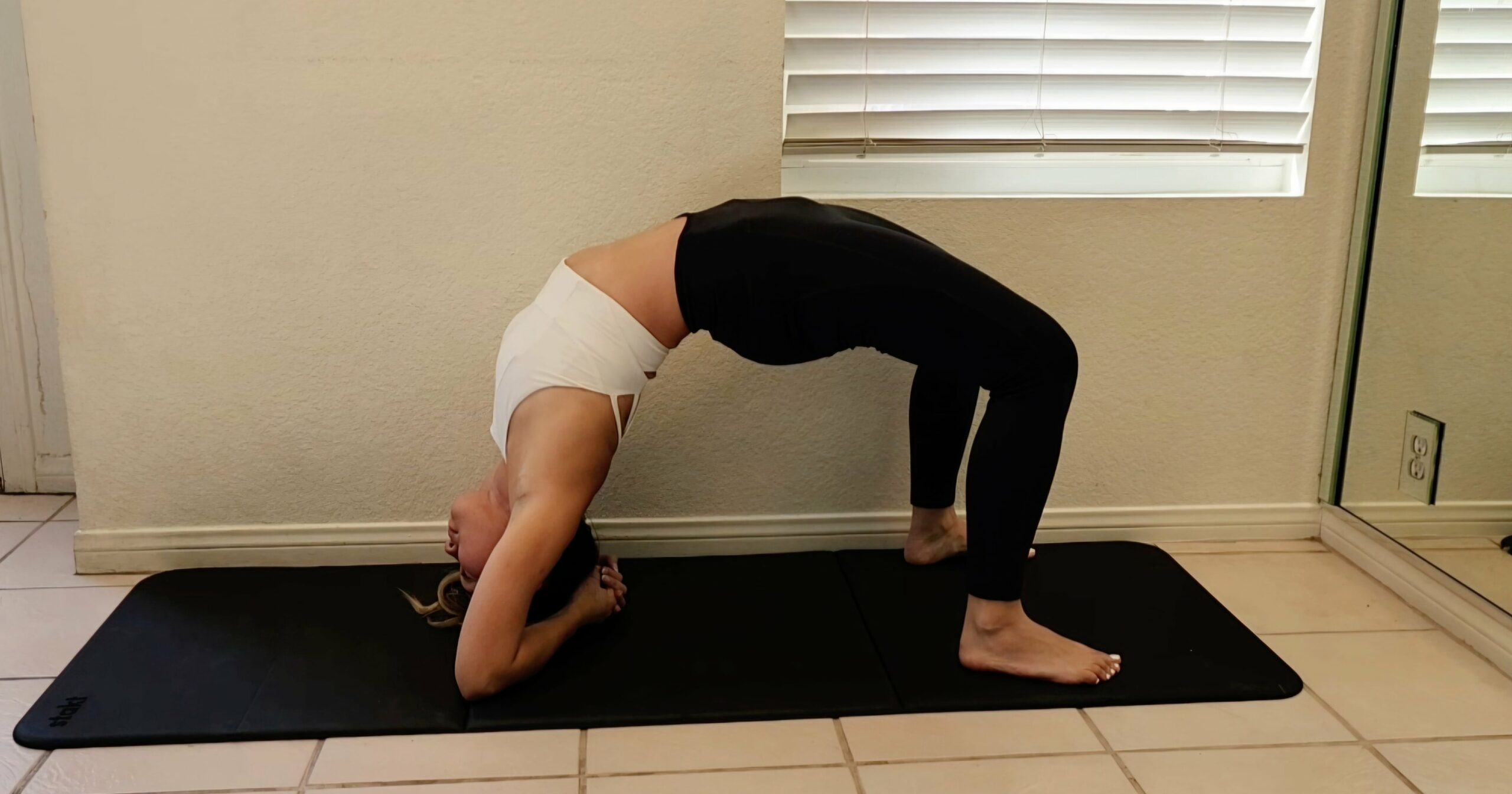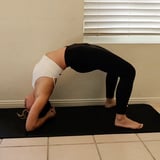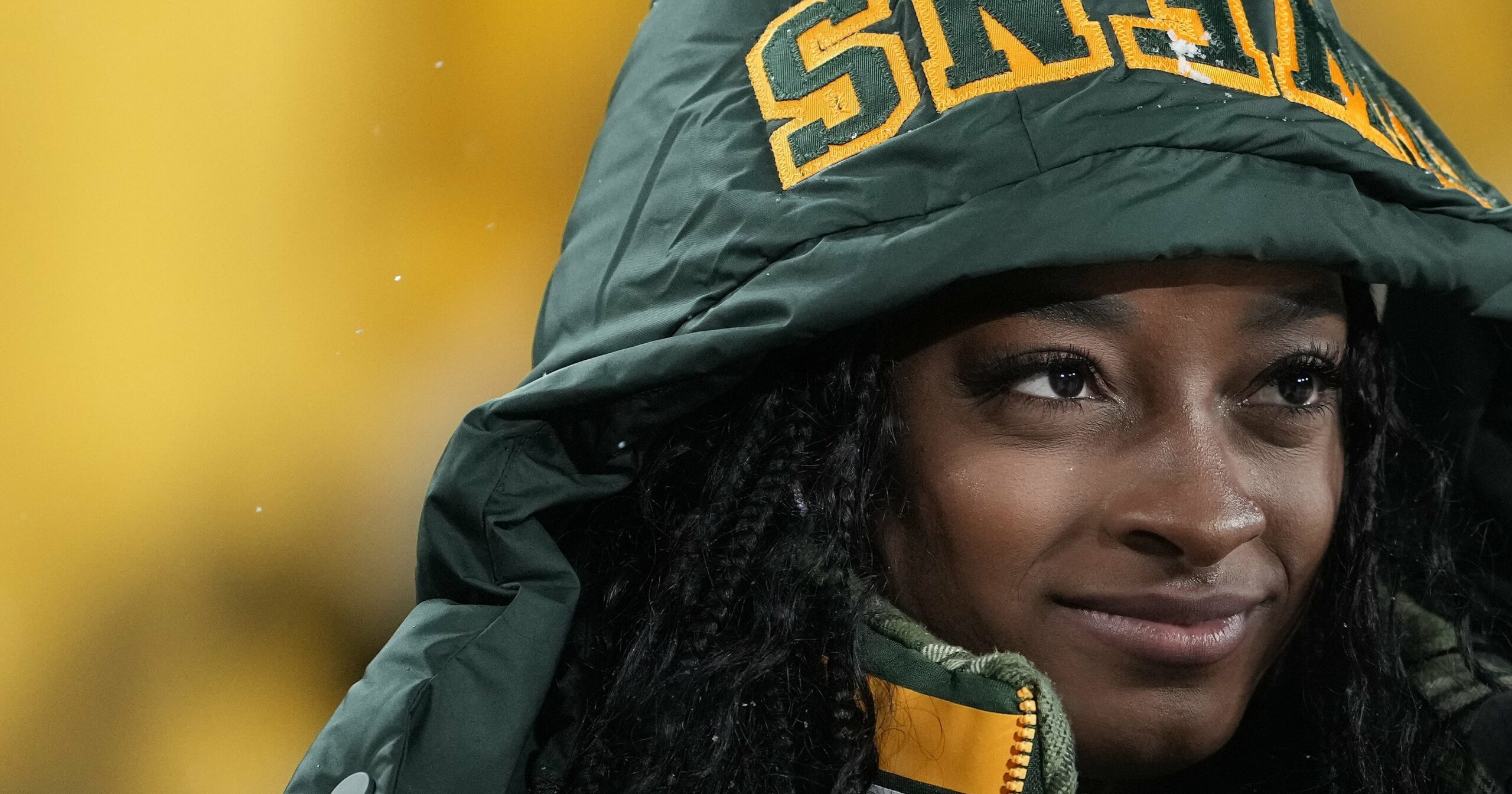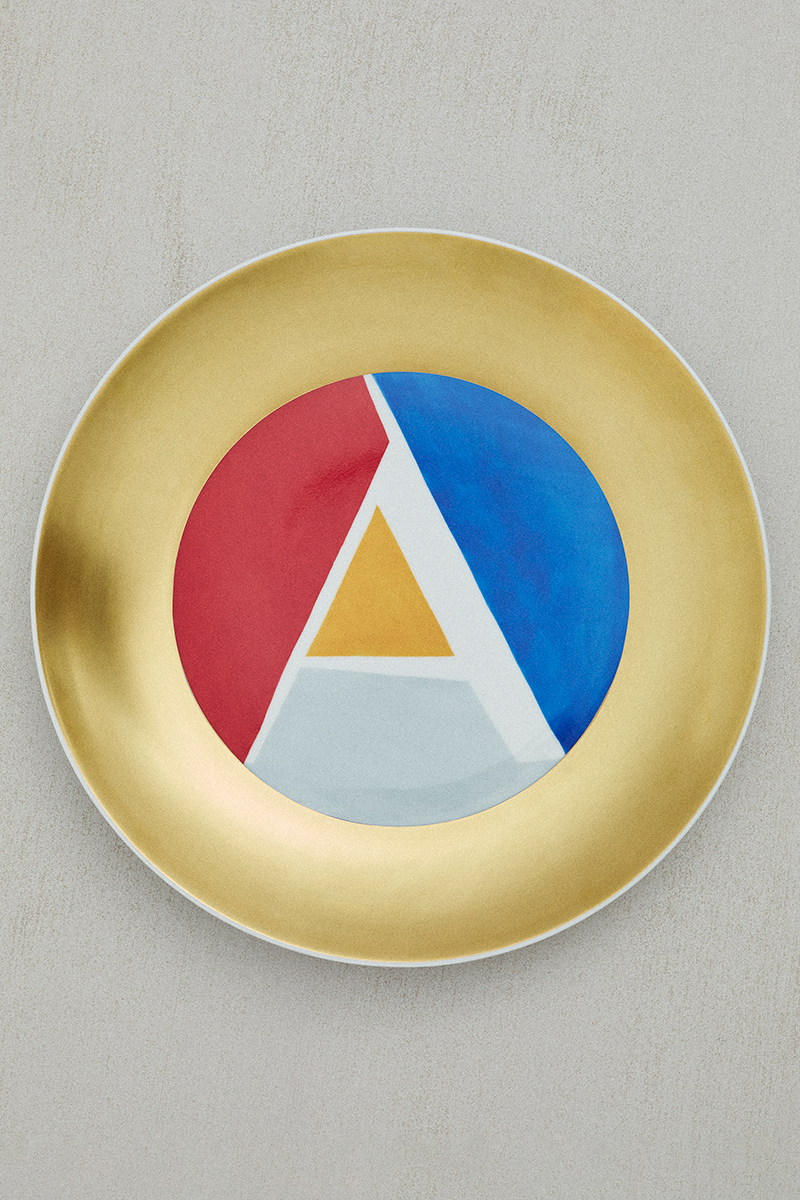When most people see contortionism for the first time, their reaction is often one of shock or disbelief: how is that even possible? The performance art, which involves twisting the body into poses requiring supreme flexibility, seems extreme. It is extreme. But on the other hand, people twist themselves into pretzel-like shapes during yoga practice or Pilates classes every day. Could a contortion class be all that different?
I always loved watching the circus as a kid, and I’d find myself curious about the art form and practice of contortion back then. The artists looked so impressive, performing incredible feats such as deep backbends, inversions, or mind-boggling human pyramids. As an adult, I have even more of an appreciation of contortionism’s intriguing blend of elegance, flexibility, strength, body awareness, and control. So even though I was daunted by the practice, I decided to take the plunge anyway.
I signed up for a class led by Anna Batchuluun through her website Blue Sky Circus Productions. Batchuluun is a professional contortionist who grew up in Mongolia and calls herself a second-generation circus performer. “My dad used to be a high wire [walker] and unicyclist. My uncle was a circus musician too, so I was always in that environment,” she tells PS. She began performing internationally at just 10 years old, ultimately going on to perform in Cirque du Soleil shows like “O” and “Zumanity”. She even once performed in the Victoria’s Secret Fashion Show, where she had the chance to meet models like Candice Swanepoel.
When I expressed my trepidation to Batchuluun, she reassured me. “Everyone has a different level and journey,” she says. “Start with your own journey, and you can start at any age.” Her oldest student is 78 and practices with her twice a week. With that encouragement ringing in my ears, I put on my stretchiest leggings and dove in. Here’s what the class was like.
What It’s Like to Take a Contortion Class
Spoiler alert: despite my nerves, I ending up enjoying the class. Although the word “contortionism” conjures up visions of performance artists executing impossibly deep backbends or inversions, the actual practice is far more accessible than it may seem at first glance.
I’d signed up for a one-on-one virtual session with Batchuluun, so I set my computer up at an angle that would allow her to see my entire form (near a mirror, so I could check my own technique). We kicked things off with a gentle warm-up – a must for a class that’s so focused on flexibility. Then, we settled onto our yoga mats to get started.
One thing I didn’t expect was how good some of the movements ended up feeling. A series of chair stretches that focused on moves to open up the thoracic spine, upper back, and chest really helped release some tension caused by working from home at a computer.
Another surprise was how familiar I was with many of the movements. Batchuluum guided me through pigeon pose, side splits, and frog pose, for instance, while I used yoga blocks on either side of my body for support. For each pose, she took me through three progressions: holding the pose, then adding a mini backbend, then adding a backbend and an arm extension. How challenging you’ll find each movement will depend on your current level of fitness and flexibility. I started to really feel the intensity during the backbend progressions.
We also did an additional series of backbend variations, and despite how challenging I found the movements, this ended up being my favorite part of the class. Something about the blend of flexibility, strength, and endurance required to hold the positions feels empowering, almost liberating to me.
Side note: Although you might think taking a contortion class virtually would be challenging, compared to being in person, I never felt at a disadvantage. Batchuluum was able to cue effectively throughout the class, and during the backbend series, she even used a pointer on a screenshot to help explain how to deepen my bend.
While much of the class was not so different from a yoga class, there was one portion that reminded me I was definitely in a contortionist class: the chin holds. For this movement, contortionists place their chins and bellies directly on the ground, then kick their legs up and over their head, making various scorpion or spider-like shapes. It’s a wow-worthy thing to witness, and to even think about trying it was almost shocking. But I had to give it a shot.
As a warm-up, Batchuluum guided me through stretching out my neck. First, I set up my yoga mat next to a chair. Then I sat on the mat, facing the seat of the chair. I placed the palms of my hands on the bottom of my jaw, cupping my chin, then stacked both elbows on the seat of the chair and slowly lowered my chest down while simultaneously looking up towards the ceiling.
Next, Batchuluum talked me through a movement that reminded me of legs up the wall pose, except in reverse. I set up my mat in front of a wall and lay belly-down with my feet closest to the wall. Keeping my chin and torso on the ground, I slowly inverted and pushed my body backward, trying to creep my feet and legs up the wall. I did my best, but it was definitely the most challenging part of the class. I felt a lot of pressure on my chin, neck, and torso, especially, and I couldn’t hold the pose very long. I came out of the inverted hold somewhat abruptly and felt a little lightheaded, which Batchuluum told me was normal.
Toward the very end of the class, she asked me if I’d like to try again. I paused at first, but ultimately agreed – and I’m glad I did. Sure, I still wasn’t able to hold the position for very long, but the simple act of trying again made me feel accomplished.
What’s Worth Noting About a Contortion Class
If you’re a beginner to contortionism, expect to take it slow. The workout is mental and physical, and at times I found myself focusing and concentrating so hard, I would accidentally hold my breath a little bit. Additionally, some moves – like the chin hold at the end – ended with me feeling lightheaded and dizzy. So it’s definitely worth getting cleared with your doctor before trying this class, letting the instructor know ahead of time you’re new, and going in with the expectation that you’re going to have to take some breaks – especially if you start to feel at all dizzy.
You don’t need any special gear to take a contortionist class, but some products could make your practice easier. During my class, the instructor and I had a bit of a laugh because the stretch-based movements made my leggings shift around, leading to the tag sticking out repeatedly. Batchuluun told me she prefers leggings without tags; her favorites are the Saina Shop High-Waisted Yoga Leggings ($13, originally $43) or the (mostly sold out at the moment) Saina Shop High-Waisted Airflow Leggings ($55). “[They’re] super comfortable, soft, and let me bend fully,” she says.
Along with my leggings, I wore a beloved longline Luluemon sports bra, similar to this Lululemon Energy Longline Bra ($58), which worked well, didn’t cause any discomfort, and didn’t ride up or pinch. For more support during your practice, nonslip socks like these MoveActive Crew Non Slip Grip Socks with Sweetheart Stripes ($16) are a good choice as well.
For gear for my first class, I used the foldable Stakt Mat Pro ($118), but any good nonslip yoga mat will work. A pair of yoga blocks were a must-have for support during the different poses and movements. I used a pair of Gaiam Yoga Blocks ($17 for two), which worked fine, but if I were to take another class I might go for the StrongBlocks from Base Blocks instead. They have a handle stored inside each block that turns it into a mini-paralette, making a pair of them super useful for movements like push-ups and inversions, including handstands.
As for recovery, Batchuluun says a massage gun like the Hyperice Hypervolt Go 2 ($129) helps her muscles recover more quickly. I used the Theragun Prime Plus ($399) massage gun on sore areas and definitely would say percussive massage therapy and heat helped relieve some post-workout tension.
Final Thoughts
Overall, I thought the contortion class was both fun and challenging. Although my neck might not have liked it (especially a day after), I found the experience surprisingly empowering. I also love practices that allow you to see consistent progress, and I believe that with regular attendance most people would see improved flexibility and mobility. I’d definitely recommend trying out a contortion class to see how you might like it for yourself. If nothing else, it’s a good story.
Jade Esmeralda (she/her), MS, CSCS, is a health and fitness staff writer and a strength and conditioning specialist. A lifelong martial artist and dancer, Jade has a strong passion for strength and conditioning, sports science, and human performance. She graduated with a Master of Science degree in exercise science and strength and conditioning from George Washington University.




